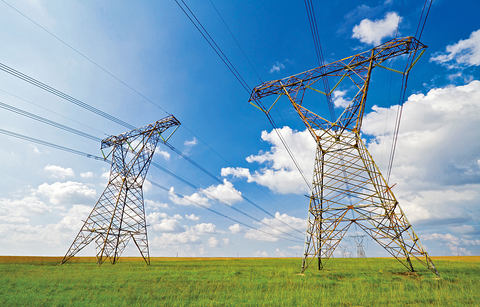
Companies are using the ability to collect more data to better understand processes, maintenance schedules and other components of their business. There is an overall need by organizations to get more information out of existing systems and new systems, and how to connect them. This enables better decision making on production, downtime, ordering parts, and virtually every aspect of an industrial facility.
Using wireless or wired networking depends mostly on the application involved. Decisions are often made by evaluating economic, environmental, security and space concerns to find the best solution. There are situations where wireless works better, and others where wired works better. We’ll discuss some factors to consider when deciding on what is best for your environment. The decision is an important one, because modern facilities and control systems run on information, so even a brief interruption to data flow can introduce significant risk to operations.
Wireless
Wireless solutions are a great fit when connecting remote equipment over long distances. Wireless serves remote applications in the utilities industry well because utilities deploy many assets out in the field. Network coverage must be considered, but also environmental factors such as testing interference come into play. For example, electromagnetic fields such as those generated by power lines seen in figure 1 may interrupt or wreak havoc on a wireless network. Wireless can be scaled much faster and easier than a wired solution, and wireless components often contain more ports and other options to build upon.

Obstacles such as these should be identified and assessed when connecting remote equipment.
With dedicated wireless solutions, remote sensors can be deployed with batteries or independent power supplies. This is useful because when facilities occasionally shut down power for maintenance, battery-powered solutions in the field may still operate in a normal manner. For example, an oil and gas company may have wireless sensors on remote pump jacks that can continue sending data via an independent power supply. Figure 2 shows pump jacks in a location where human access is difficult.

Wired
Wired connections provide a very reliable communications medium as connectivity expands between machines on factory floors to devices and corporate offices. Network expansion can be accomplished by using industrial routers, for example, to provide secure, reliable, high-speed communication.
Physically connected equipment is less likely to experience interference or interruption. More data can often be transferred for a lower cost, as companies reduce the risk of running up high cellular charges.
Industrial grade Ethernet switches, for example, perform reliably in remote, harsh locations in several configurations. Many industrial switches offer diagnostic capabilities that help prevent downtime by proactively issuing alerts before falling temperatures and other extreme conditions can cause a problem. One optional feature is for the switch to regularly send packets of diagnostic data that can be integrated into a management system or viewed on an HMI.
Ethernet is a good choice, for example, for infrastructure and solutions where remote monitoring may not be a factor. However, even if networks don’t reach outside, environmental considerations should not be ignored. Devices should offer the ability to meet varying environmental requirements, such as wide operating temperature ranges, fluctuating input power voltages and air with particulate matter that may cause failure in devices with moving parts. As a primary connection or a backup to existing network links, the right wired routers should be well-suited for harsh industrial environments.
A Note on Security
Some considerations apply to both wired and wireless solutions, probably none more important than security. One of the downsides to increasing connectivity is the potential of industrial networks being more vulnerable to cyber threats such as remote attacks and viruses.
If possible, security should be implemented first with physical security and equipment access, then moving on to data protection. This can guard against costly network downtime and demands on IT staff. The solar field shown in figure 3 is without physical security.

Physical security represents an organization’s ability to physically separate equipment from non-authorized users. Fences and enclosures are easy-to-deploy solutions for both remote monitoring facilities served by wireless, and more localized operations that might be connected via wired options. Similarly, managing user access through password policies, role-based access control and access control lists (ACLs) can significantly reduce compromised data by identifying and logging when and who is accessing equipment.
On the more advanced end of the spectrum, newer technologies such as software-defined networking (SDN) can provide inherently more secure communications while simplifying the process of deployment and management, which can significantly reduce operational costs. SDN enables dynamic routing of encrypted information through secure nodes without the need for a dedicated IT team to manage it. Solutions like SDN in an industrial network, where environmental and backhaul variables are constantly changing, can help ensure data stays secure and systems remain operational without IT intervention.
Covering Bases
Improvements in industrial networking will likely lead more organizations to adopt wireless solutions, but the choice depends on what organizations are trying to achieve from a technology and business standpoint. When assessing a provider for industrial networking, its best to choose one that offers both wireless and wired equipment, evaluating security options alongside network performance.
About the author
Colin Geis is Director of Product Management, IIoT at Red Lion Controls. He has a demonstrated history of working in industrial automation and communications industries for almost fifteen years. Red Lion is a US manufacturer of industrial automation and networking solutions that help organizations connect, monitor and control assets worldwide. Colin can be reached at [email protected].